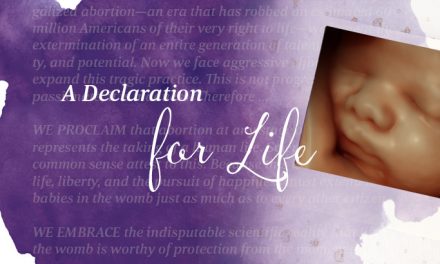It’s a well-known fact in this day and age that a growing number of journalists, media outlets and academics twist information in order to push a certain narrative. That’s what happened in The Nation piece entitled, “A Long History of the Anti-Abortion Movement’s Links to White Supremacists.” The material in the article is manipulated in such a way to highlight and imply the worst about the pro-life movement. It’s wrong, inaccurate, biased and, frankly, unworthy of publication.
The article starts off with trying to connect the pro-life cause historically with the white supremacist movements, and most specifically with male dominated groups known for their misogyny. Author Alex DiBranco wrote, “Despite the movement’s careful curation of its public image, racism and xenophobia have been woven into (the pro-life movement) throughout its history. With large families, due to the Roman Catholic Church prohibitions on contraception and abortion, Catholic immigration in the mid-1800s through 1900s sparked white Anglo-Saxon Protestant fears of being taken over demographically that fueled opposition to abortion as a means of increasing birthrates among white Protestant women. At the time, Roman Catholic immigrants from countries like Ireland and Italy who would be considered white today were among the targets of white supremacist groups like the Klu Klux Klan.”
While it is true that there was a racist and unflattering reaction of Americans to the immigration of people from Ireland, Russia, Germany, China, Japan and other countries in the late 19th early 20th centuries, but the conclusion DiBranco reaches when it comes to the pro-life movement is completely inaccurate and Planned Parenthood’s connection entirely.
At no point does DiBranco discuss the actions and motivations of the founder of Planned Parenthood, Margaret Sanger. In the early 1900s, Sanger wanted to push her eugenic beliefs and prejudice against the lower classes and immigrants by teaching them about birth control. The first Planned Parenthood location was even set up in an immigrant neighborhood in New York City and she also gave talks to the Klu Klux Klan on her birth control tours. DiBranco fails to mention any of this in the article and chooses to focus on what she considers the connection between pro-life and radical white supremacist groups, which is essentially nonexistent.
There are many other examples of DiBranco’s obvious bias and poor research skills throughout the article. In addition to making the connection to white supremacists, she also tries to connect pro-life views with incels, involuntary celibates who often advocate for violence against women, misogyny and anti-Semitism. The fallacy of this work is obvious. Instead of contacting pro-life groups like Focus on the Family, the March for Life, Live Action, the Catholic Church, Students for Life and others, she ignores them and cites the most radical and fringe groups in order to manipulate the reader into agreeing with her point of view.
In her article, she writes, “The relationship between Christian anti-abortion, white supremacist and secular male supremacist ideology is complex. While they often put aside their differences in order to collaborate on shared goals, the agendas are different and inclusive of conflict.”
This is categorically untrue. In the recent pro-life movement, I can think of no conscious collaborations between a pro-life group and white supremacists. It’s like making a connection between the Nazis and PETA because both groups support animal rights. The comparison is ridiculous and should be rightly ignored, like this article.
Academics like DiBranco have a responsibility to research their material and report it correctly. Throughout her article, I found myself, as a pro-life expert, being confused as to what she was talking about, who she was talking about and how she was making these crazy connections. She clearly is pro-abortion and has never spent any time with any pro-life advocate or at a pregnancy resource center. It’s a shame, if she had then she would’ve realized that her entire argument is built around believing the worst about some of the most generous and compassionate people she could ever meet.






